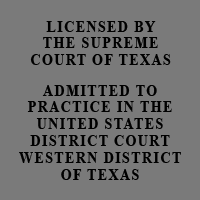Texas Smoke Inhalation Lawyer Helps Victims and Families
Smoke inhalation is the number one cause of death related to fatal fires. An estimated 50%-80% of fire deaths are the result of smoke inhalation injuries rather than serious burns. Smoke inhalation can also cause permanent brain damage and respiratory problems. Smoke inhalation impacts a large number of families each year as in the United States. Fire and smoke inhalation kills over 150,000 people every year. Fires also cause millions of serious injuries every year. Texas smoke inhalation lawyer helps victims of smoke inhalation and families who have lost loved ones.
If you have been seriously injured or lost a loved one from smoke inhalation, Texas smoke inhalation Lawyer Jason Coomer provides free online evaluations of fire death claims and smoke inhalation claims. Feel free to submit an inquiry through our contact form or send an e-mail for a Free Online Evaluation of your potential fire smoke inhalation claim by an Austin Texas fire and smoke inhalation Attorney.

Smoke Inhalation Lawyers Understand That Accidental Fires Can Cause Serious Injuries and Death
Smoke inhalation from an accidental fire can cause difficulty breathing, carbon monoxide poisoning, and other toxic effects that can result in serious injuries or even death. Smoke inhalation occurs when a person breathes in smoke or the products of combustion during a fire. The fire not only uses the surrounding oxygen in the air taking the oxygen that humans need to breathe, but through burning or combustion (the rapid breakdown of a substance by heat) creates smoke which is a mixture of heated particles and gases that are created by burning.
It is impossible to predict the exact composition of smoke produced by a residential fire or industrial fire as every accident fire is different. The products being burned, the temperature of the fire, and the amount of oxygen available to the fire all make a difference in the type of smoke produced. This is especially true when furniture, appliances, and other items made up of plastic or other chemicals is burned. The resulting smoke can be filled with irritants or toxins and result in serious respiratory problems or even death.
Smoke Inhalation Lawyers Help Victims Who have Suffered Asphyxiation and Brain Damage
Smoke inhalation can damage the body by simple asphyxiation (lack of oxygen), chemical irritation, chemical asphyxiation, or a combination of these. Combustion can use up the oxygen near the fire and lead to death when there is no oxygen for a person to breathe. Smoke itself can also contain products that do not cause direct harm to a person, but they take up the space that is needed for oxygen. Carbon dioxide acts in this way.
Combustion can also result in the formation of chemicals that cause direct injury when they contact the skin and mucous membranes. These substances disrupt the normal lining of the respiratory tract. This disruption can potentially cause swelling, airway collapse, and respiratory distress. Examples of chemical irritants found in smoke include sulfur dioxide, ammonia, hydrogen chloride, and chlorine.
A fire also can produce compounds that do damage by interfering with the body's oxygen use at a cellular level. Carbon monoxide, hydrogen cyanide, and hydrogen sulfide are all examples of chemicals produced in fires that interfere with the use of oxygen by the cell during the production of energy. If either the delivery of oxygen or the use of oxygen is inhibited, cells will die.
Smoke Inhalation Lawyers Recognize the Symptoms of Smoke Inhalation
Smoke inhalation can cause health problems that result in coughing, shortness of breath, hoarseness, headaches, changes in mental status, changes in skin coloration, and passing out.
The first step in treating a person
suffering from smoke inhalation is to remove the person from
the smoke-filled environment to a location with clean air.
The second step is to start CPR and make sure that they are
getting oxygen. Oxygen may be applied with a nose
tube, mask, or through a tube down the throat. If the
patient has signs and symptoms of upper airway problems
(hoarseness), they will most likely be intubated. The doctor
places a tube down the throat to keep the airway from
closing due to swelling.
If the patient has respiratory distress or mental status
changes, they may also be intubated to let the staff help
with breathing, to suction off mucus, and keep the patient
from choking on secretions. If the smoke inhalation is
bad enough, a bronchoscopy may have to be done to directly
look at the degree of damage done to the airways and to
allow for suctioning of secretions and debris.
If the patient has carbon monoxide poisoning, the use of a
hyperbaric chamber for hyberaric oxygenation may be
considered. This treatment use compressed oxygen to
help the person's blood gases return to normal. A
complete blood count may also be done to determine if there
are enough red blood cells to carry oxygen, enough white
blood cells to fight infection, and enough platelets to
ensure clotting can occur. Carboxyhemoglobin and
methemoglobin levels are also typically measured in all
smoke inhalation victims with respiratory distress, altered
mental status, low blood pressure, seizures, fainting, and
blood pH changes.
Texas Fire and Smoke Inhalation Lawyers Seek Compensation for Families and Victims
This Austin Texas smoke inhalation lawyer represents fire and smoke inhalation clients throughout Texas. He also works with other smoke inhalation and fire lawyers throughout Texas and the United States including Houston Smoke Inhalation Lawyers, Dallas Smoke Inhalation Lawyers, and San Antonio Smoke Inhalation Lawyers.
The Law Offices of Jason S. Coomer, P.L.L.C. helps individuals seriously injured by fire and smoke inhalation and the families of those killed by smoke inhalation. If you or a member of your family has suffered severe smoke inhalation as a result of a fire Texas fire and smoke inhalation lawyer, Jason Coomer, may be able to assist you with a fire and smoke inhalation claim. If you need a Texas fire and smoke inhalation lawyer to represent you with a fire or smoke inhalation claim, contact Texas Smoke Inhalation lawyer Jason Coomer.
Feel Free to Contact Us with any Questions
Associations




